Steam Deck Availalability and OS updates
There’s been a few big developments related to the Steam Deck in the past week, so let’s get to it! The first one is about the availability of the device.
Steam Deck: Now Available Without Reservation
This will make the scalpers cry, but it seems like Valve has now increased their production to a point where they can now accept orders and ship directly without entering a queue system (note: this does not apply to Asia for some reason, where I am still waiting for Komodo to give any kind of useful info about the order since August 4th 2022). This also invalidates a bunch of predictions we have made back in early 2022: many of us expected the device to still remain largely limited in supply by the end of the year, and it looks like the situation has changed much faster than we had anticipated. In other news, there’s unsubtantiated numbers circulating around (in a recent KDE presentation related to the Steam Deck, the number of 1 million of Decks sold was given, without any specific source) that seem to indicate that the production is accelerating.
Steam Deck: A glimpse at the production line
Valve being an engineering focused company, it’s not a surprise that they like to showcase the work they did to make production more efficient and more automated. Inside the recent video they have shared we see a short clip related to the said process, just like they did before for the Steam Deck Controller. A few interesting things to note:
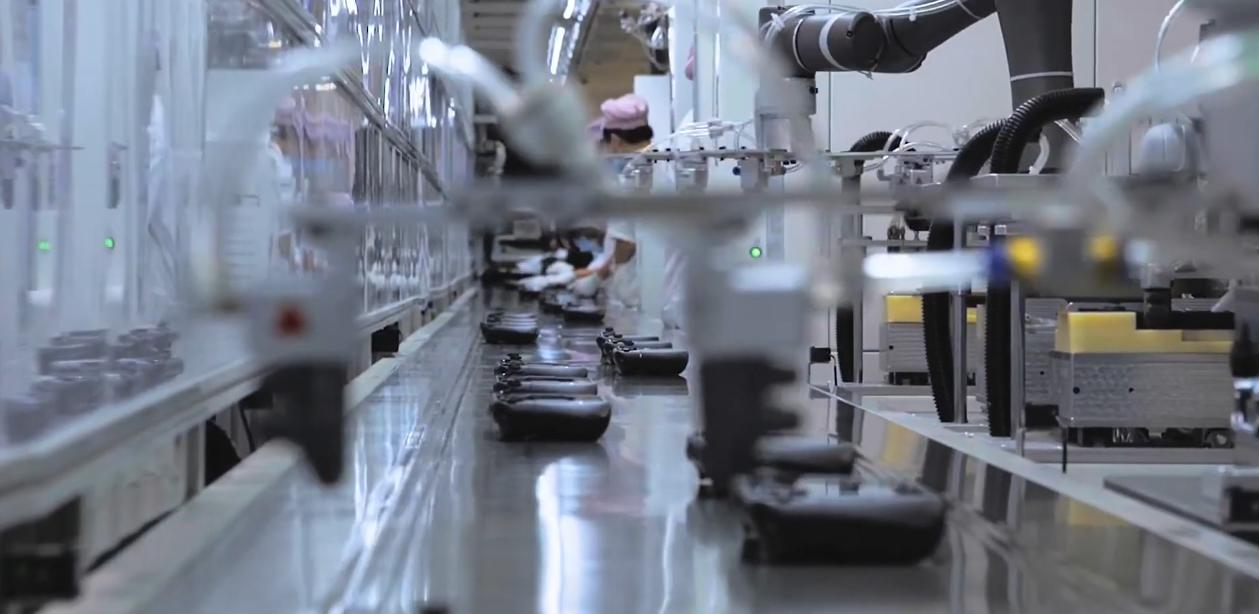
The Decks go on a conveyer belt that has an automated checking system. A robot arm takes them to another robot that seems to conduct a series of tests (probably controls related, to press buttons and so). The devices are powered during that time and seem to display some kind of diagnostic information. We can briefly see some kind of QR Code as well, that may be used to indentify either the device or whatever is being tested.

We can also see the Steam Decks aligned just like humans in the Matrix, charging in a very compact space, probably before shipping to their final costumers. There is a color code (yellow and green) probably indicating whether each unit is charging or fully charged. I am guessing that when a device turn green, it is ready to go for individual packing.
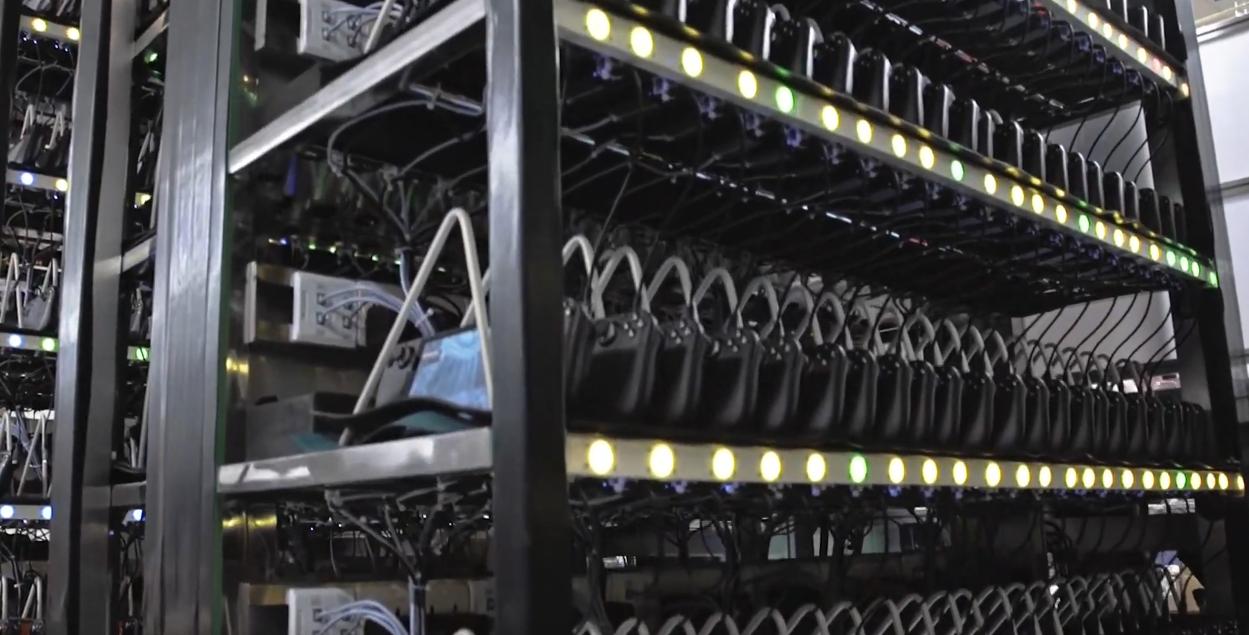
Onto the shipping, there’s 192 Steam Decks packed together at once to go.
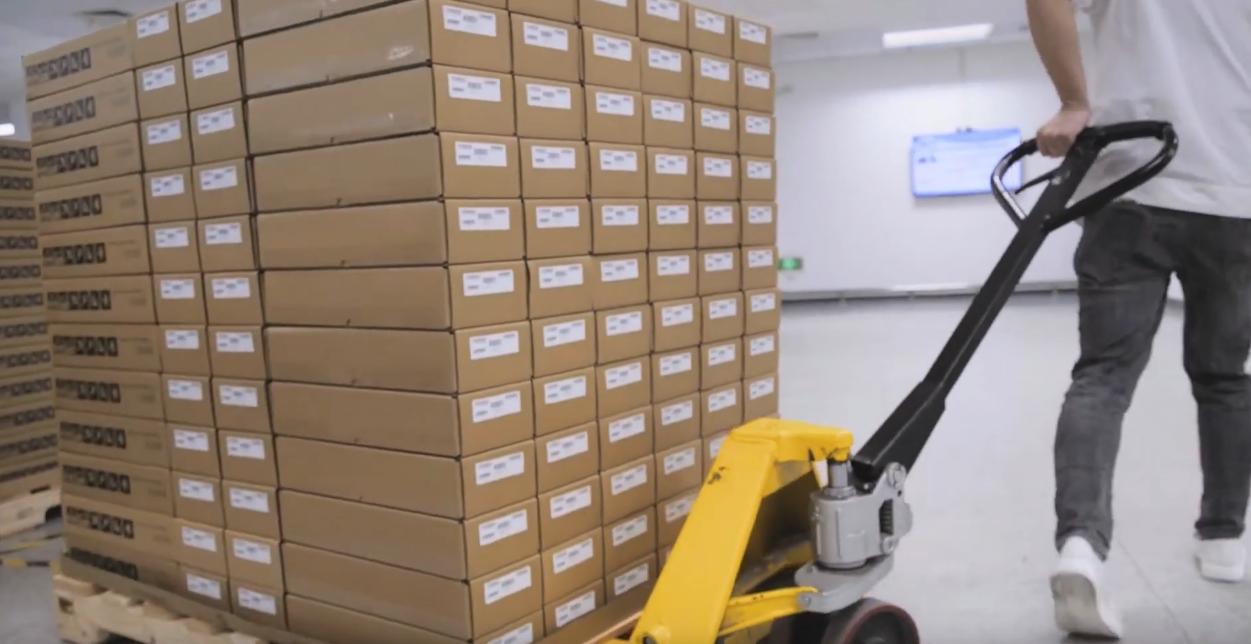
The process seems to take place in China based on what we could see from the employees and the environment, which is consistent with what we knew before from their partners.
The Dock is available
While it took a long time, the dock made for the Steam Deck is now available (it was visible at the TGS 2022 as reported before), and the full specs are:
- Dimensions: 117mm x 29mm x 50.5mm
- 3 x USB-A 3.1 Gen1 Ports
- Gigabit Ethernet
- DisplayPort 1.4
- HDMI 2.0
- MST (Multi-Stream Transport) enabling multi-monitor support as well as supporting up to 4k 60hz, or 1440p 120hz and support for FreeSync display technologies.
Support for Freesync is welcome since it should make games look smoother even at reduced framerates (see our previous review of how Freesync works on Nvidia).
The dock is priced at 89 USD, which is on the expensive side, while it does come with an additional power supply which is identical to the one you got with the Deck.
Here’s a render of the dock from the back:

The dock is a great addition to the Steam Deck, as it help to transform it into a workstation or a gaming machine with a larger screen (while the performance will surely be the main bottleneck for more demanding games).
Steam Deck: OS Improvements
With the availability of the dock, Valve has provided more options to make the docked experience more seamless, with a way to auto-adjust the resolution and scale the interface of the Steam UI.
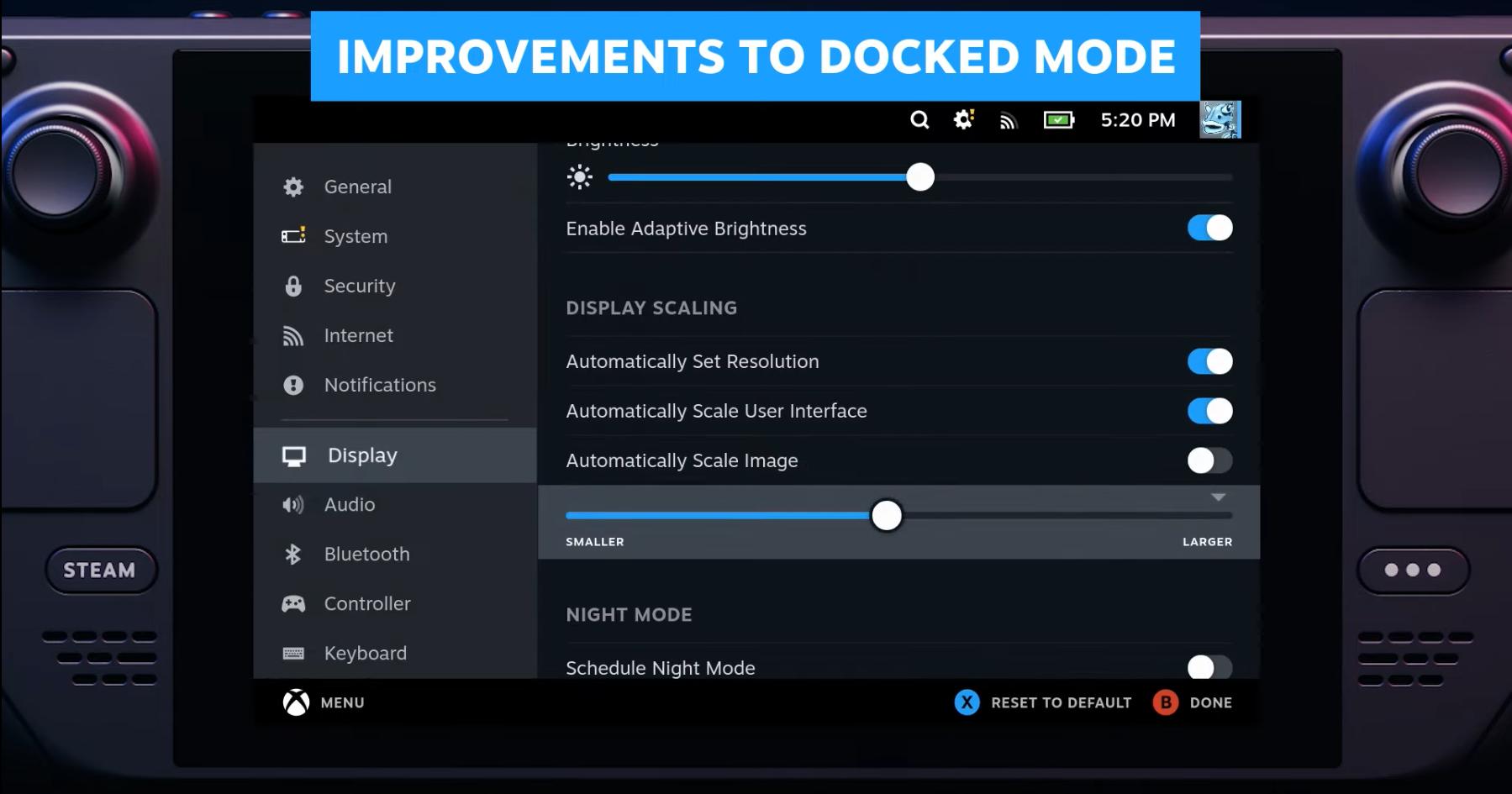
The latest firmware updates also bring more changes, such as better on-screen keyboard support for Asian languages like Chinese, Korean and Japanese.
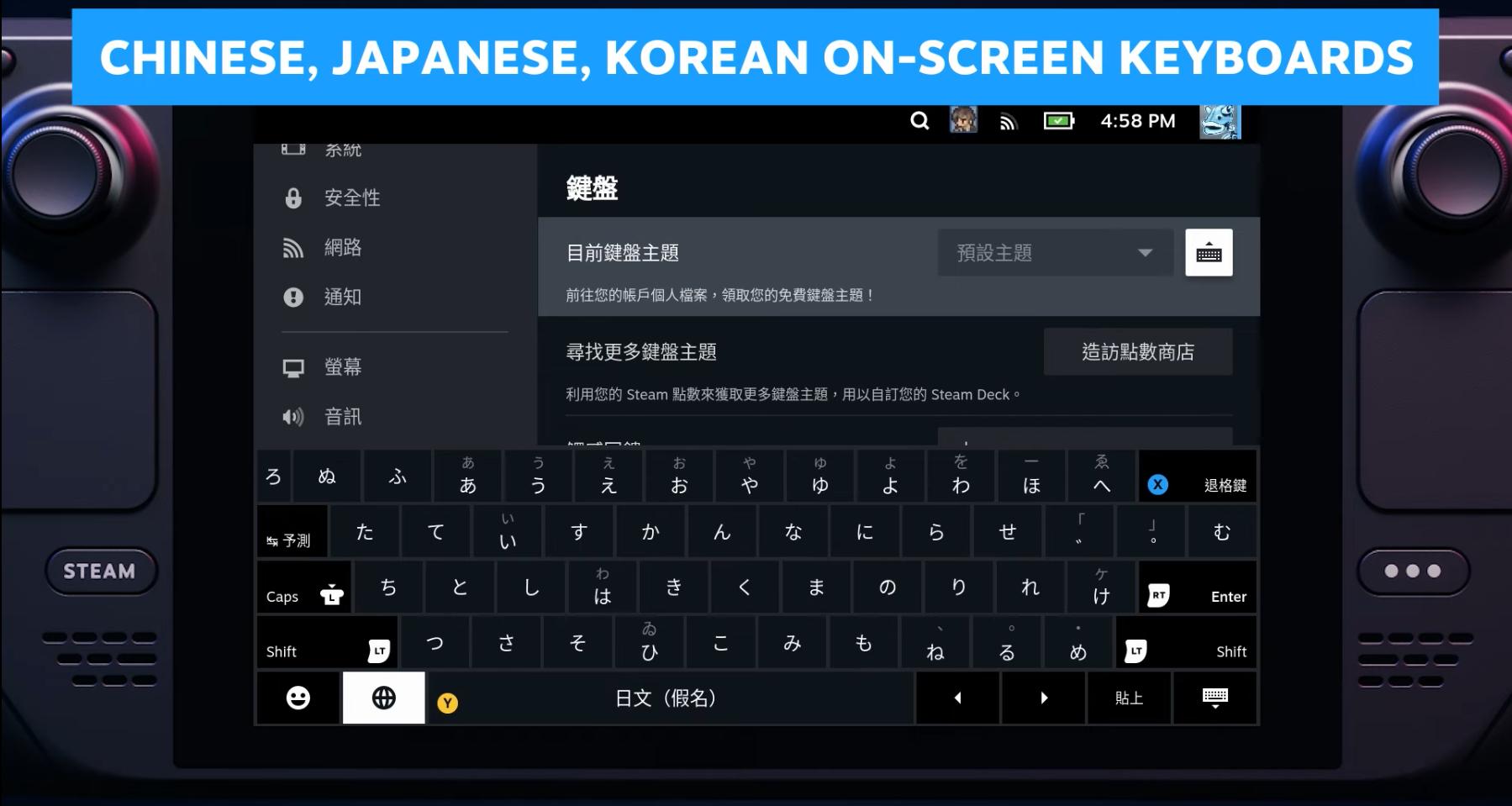
It also brings more customization to the Steam Input menu, with more radial menu options to include more and more commands through the haptic controls.
Last but not least, there are also improvements for the offline mode, which was one major pain point recognized by people travelling with their Decks (launching games required them to be online, which is difficult in some places like inside a plane). You certainly don’t want a portable gaming system to be online only, and Valve has apparently addressed this to make the offline support work better with an actual toggle.
The Yuzu incident
A first version of the video released to talk about all these changes had an unfortunate split second where you could see on screen the shortcut to launch Yuzu, the Nintendo Switch emulator, from the UI. Oops!

A few articles picked it up, and the said video was taken offline relatively quickly and replaced by a new one where Portal 2 shows instead of Yuzu.

Nintendo is quite sensitive for any suggestion of emulation, even more so when it comes to one of their commercial systems like the Switch. Valve probably dodged a bullet on that one. It’s however not a big issue nowadays to find reports of Switch games running on the Deck on Youtube itself, like this video of Metroid Dread (available at the time of writing, in case it disappears you’ll know why):
Excellent news overall. The fact that the supply is now meeting the demand is a big one, and should lead to a much faster growth of the handheld PC market.
